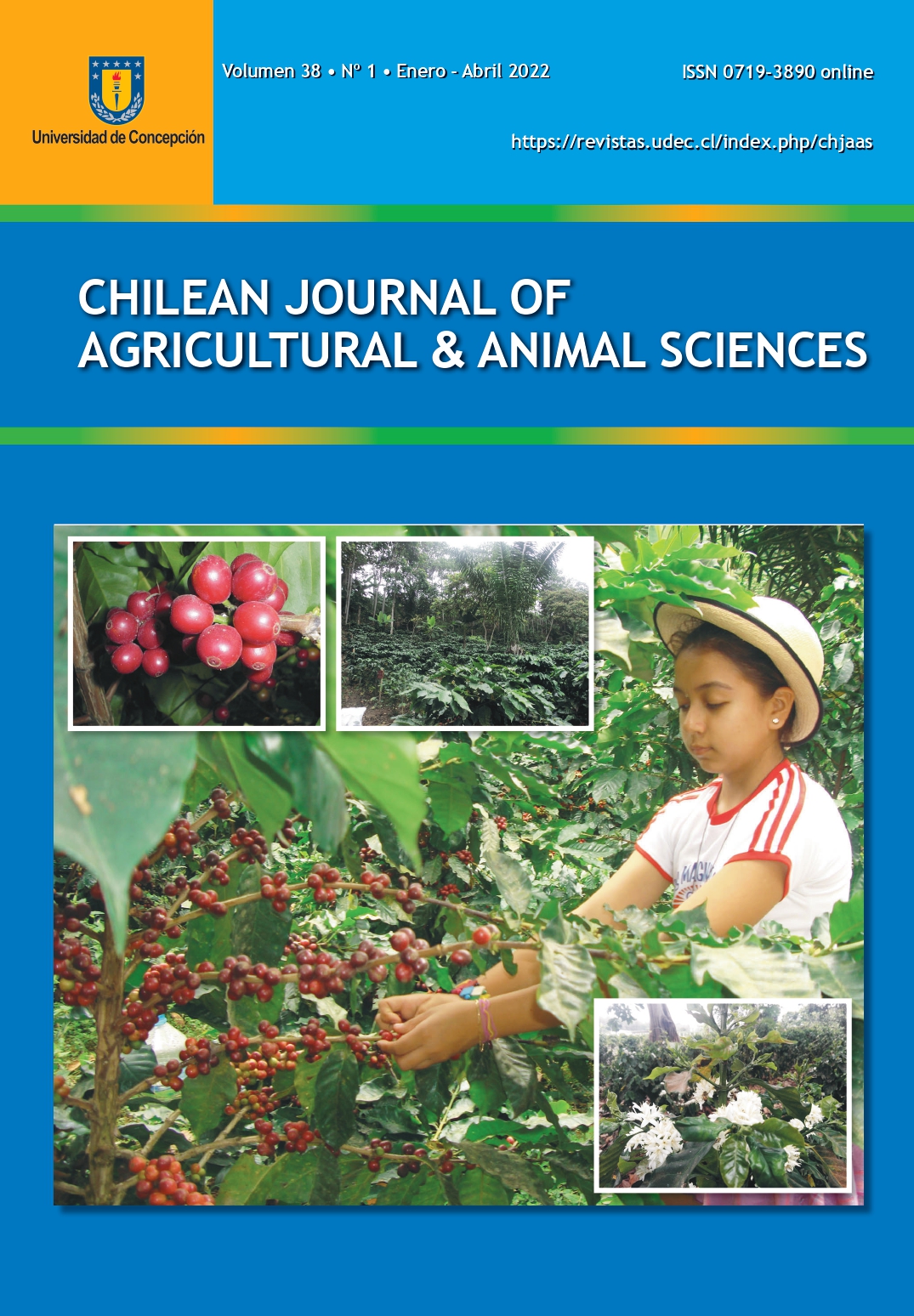CARCASS INDICES AND MEAT QUALITY OF BROILER CHICKENS FED DIETS CONTAINING FORTIFIED FERMENTED CASSAVA STUMP
DOI:
https://doi.org/10.29393/CHJAAS38-12CIRM70012Palabras clave:
Cassava stump, Cassava leaf, Solid state fermentation, Carcass yield, Meat qualitiesResumen
A 56-day study was conducted to evaluate carcass and meat quality of broiler chickens fed diets containing fortified fermented cassava stump (FFCS) as a replacement for maize. Cassava stumps and leaves were fermented in the solid state at room temperature, using Aspergillus niger ATCC 16404 for 192 and 96 hours, respectively, and then mixed at a ratio of 19:1 to obtain the FFCS. The birds were allotted into four treatments with three replicates (n= 30). The treatments consisted of different inclusion levels of FFCS: Diet 1 containing 0% FFCS (control treatment); Diet 2 containing 20% FFCS; Diet 3 containing 40% FFCS; and Diet 4 containing 60% FFCS. Dressing and eviscerated percentages were higher (p ? 0.05) in birds fed the diets with up to 40% FFCS. The carcass yield was not significantly influenced (p > 0.05) by the inclusion of FFCS, but values obtained were higher with up to 40%. Meat quality was significantly (p < 0.05) influenced by the FFCS. In addition, the degree of meat peroxidation decreased with increased FFCS levels. Diets with up to 40% FFCS inclusion resulted in improved carcass traits, oxidative stability, and meat quality. Therefore, the addition of fortified cassava stump in broiler chickens’ diets could produce meat of better quality, with low peroxidation, high oxidative stability, and longer shelf-life.
Descargas
Publicado
Versiones
- 2022-04-28 (2)
- 2022-04-28 (1)
Cómo citar
Número
Sección
Derechos de autor 2022 Universidad de Concepción

Esta obra está bajo una licencia internacional Creative Commons Atribución 4.0.







